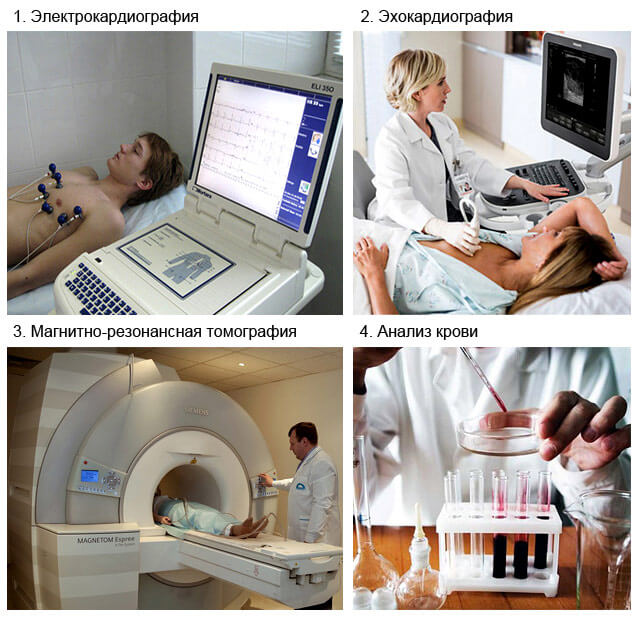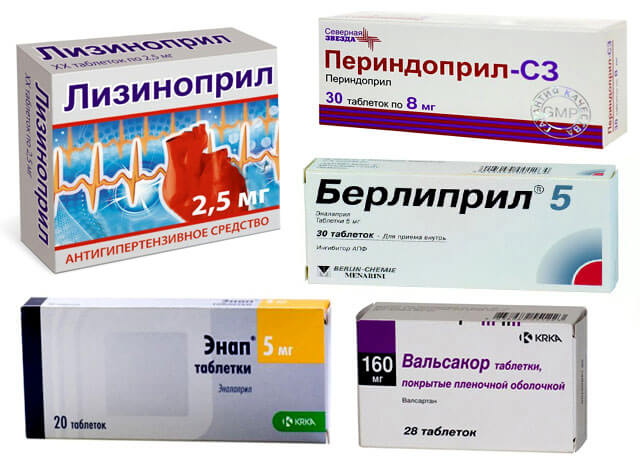Cardiosclerosis: symptoms, diagnosis and treatment
Author Ольга Кияница
2018-05-15
The essence of pathology: why this disease is secondary
The secondary nature of the disease implies its lack of independence and dependence on other pathological processes that provoked its development. The same is true for cardiosclerosis - it never arises first, it is always caused by some other violation. There are many reasons for this, but they are based on a deficiency of nutrients.Gradually, this leads to the replacement of muscle tissue with a connective tissue. And although collagen fibers perform a very important supporting function, they can never completely replace cardiomyocytes. In the future, because of this, the contractility of the heart will decrease, the release of blood will drop and stagnation will develop in the small and large circle of the circulation.

Types of cardiosclerosis
The disease is more common in older people, however, can occur in young and even in childhood. Cardiosclerosis is divided according to the nature of its distribution into two main types:
- Focalized cardiosclerosis;
- Diffuse cardiosclerosis.
Features of diffuse process
Diffuse cardiosclerosis is a uniform distribution of cicatricial changes throughout the heart muscle. As a rule, this type of pathological process is observed in elderly people suffering from chronic myocardial ischemia. At first, diffuse cardiosclerosis proceeds imperceptibly, but gradual replacement of the myocardium with areas of sclerosis leads to the development of a rhythm disturbance. Most manifestations of the disease can have serious consequences, especially if you do not engage in appropriate treatment.
Features of focal process
The focal form is manifested in the form of myocardial scars, which differ greatly in area and size. Focal cardiosclerosis, as a rule, is a manifestation of a successfully transferred myocardial infarction or myocarditis.
Depending on the size of the focus of sclerosis, it is also customary to allocate broad focus and small-focus types of the disease:
- In the first case, the formation of a large sclerotic focus is associated with blockage of a large coronary vessel and subsequent massive death of cardiomyocytes. This type of cardiosclerosis is mainly characterized by the proliferation of large areas of collagen fibers and other connective tissue elements at the site of the infarction. As a result of complete replacement of the myocardium, a scar is formed that promotes the appearance of an aneurysm of the heart.
- Small-focal cardiosclerosis is a slight change in the muscular tissue of the heart, accompanied by the formation of white interlayers of connective tissue located inside the myocardium. Small-focus cardiosclerosis occurs with oxygen deficiency in the walls of the chambers of the heart. In the future, this leads to a decrease and death of cardiomyocytes and the formation of collagen fibers on their background.
When does pathology become dangerous?
The greatest threat to the patient is formed by an aneurysm of the heart. It appears after a large-heart attack of a heart attack, when massive necrosis of the myocardium occurs. Against the background of high intracardiac pressure, the necrotic wall of the heart chamber begins to swell, stretch and thin out. As a result, only the site of connective tissue remains, devoid of any signs of contractile activity. The main danger in this case is an aneurysm rupture, subsequent bleeding into the pericardial cavity and the development of a cardiac tamponade. If the time is not carried out an operative intervention, then with 100% probability it can be argued that such a patient will die.
The main causes of
As it was said earlier, cardiosclerosis can affect the cardiovascular system of children and the elderly, but the reasons provoking this process in each age group have their own special features. For example, in children with cardiosclerosis in the myocardium there are signs of inflammatory or infectious diseases. This is the beginning of the process of replacement of the heart muscle.
In adults, the causes of the formation of sclerotic foci are more extensive and may include metabolic disorders, myocarditis and ischemia. The following diseases can affect the formation of cardiosclerosis:
- Inflammatory processes arising in the cardiac muscle (myocarditis);
- Ischemic heart disease characterized by impaired blood flow;
- Atherosclerosis, disturbing the supply of oxygen and nutrients to the myocardium;
- Myocardial dystrophy - direct damage to the heart muscle, associated with a violation of the metabolic processes of the myocardium.
Dystrophic cardiosclerosis can form against the background of the following pathological processes:
- With hemosiderosis. This disease, during which iron begins to be deposited in the heart tissues;
- With amyloidosis of the heart. This is a systemic disease manifested by diffuse deposition of the protein-polysaccharide complex (amyloid) in the myocardium;
- With avitaminosis;
- With the development of anemia of varying degrees;
- With regular intoxication: drugs, alcohol;
- Overeating or unbalanced diet;
- With a sedentary lifestyle: lack of physical activity, decreased muscle tone;
- Regular stress. Even small psychoemotional loads have consequences that negatively affect the cardiovascular system.
Thus, all of the above reasons contribute to reducing the amount of incoming oxygen in the muscle tissue of the heart.Due to oxygen starvation, a normal healthy myocardium gradually fades and is replaced by sclerosis sites. The proliferation of connective tissue leads to a decrease in the performance of these areas of the heart, so neighboring healthy cardiomyocytes take on some of the burden.
Thus, there is a substitution hypertrophy of the muscle fibers, allowing for some time to compensate for organic disorders. If the pathological factor continues to negatively affect the myocardium, then this process gradually turns into decompensation and develops heart failure.
Are there always symptoms?
The clinical manifestations of cardiosclerosis depend on the nature of myocardial damage. They can be small diffuse, or large, flowing through the entire thickness of the heart muscle. Regardless of the amount of damage, cardiosclerosis will adversely affect the functioning of the cardiovascular system, but, as a rule, this process proceeds slowly and imperceptibly. Typical symptoms of cardiosclerosis are:
- Dyspnea that occurs during normal physical exertion;
- Rapid fatigue with motor activity;
- Dizziness and pain in the chest;
- Feeling of a strong palpitation, noted during rest;
- Feeling of lack of air while lying down;
- Puffiness of the lower extremities, most arising in the evening.
If you find similar symptoms, to exclude cardiosclerosis or other cardiac pathology, you should consult a specialist. In the early stages with the disease it is much easier to fight, so timely treatment to the doctor is the key to successful recovery.
All the above symptoms are characteristic for the initial stage of the disease and in the course of further development the severity of the manifestations will only increase. With the progression of cardiosclerosis, the following symptoms come to the fore:
- Shortness of breath, which appears even during rest;
- Frequent signs of suffocation, arising at night;
- Strong heartbeat, accompanied by pain in the chest;
- The swelling of the lower extremities begins to worsen;
- Due to right ventricular failure, stagnation occurs in the liver, which manifests itself in the form of severity, discomfort and pain in the right upper quadrant.
Further aggravation of the situation leads to the development of angina pectoris or heart failure. A large focal shape contributes to the formation of an aneurysm, which is mostly asymptomatic, but can threaten a heart rupture.
This clinic is more typical for large areas of cardiosclerosis. Diffuse or fine-focal type of pathology for a long time is present in the body without any symptoms. In such cases, the definition of changes in the myocardium will require certain diagnostic tests.
Diagnosis of cardiosclerosis
It is based on clinical manifestations and laboratory tests. At the very beginning, the doctor studies the patient's life history and disease in detail. This allows us to identify the main cause, the appearance of cardiosclerosis. Especially in the diagnosis of the patient has electrocardiography (ECG), with which it is possible to fix any violations of cardiac activity. If there is an ailment, then the ECG will display violations in the form:
- The reduced voltage of the QRS complex;
- Anomalies of the ST interval;
- Increases in the right heart.
After an electrocardiogram, a chest x-ray may be required in two projections. As a rule, the pathology is expressed in the form of a flattening of the waist of the heart, expansion of the chambers of the heart and an increase in the cardiothoracic index.

The symptomatology of cardiosclerosis is characterized by insufficient filling of the ventricles, as well as pathological changes in the tricuspid and mitral valve. If the signs of the disease are complex, then there is a reverse transfer of blood from the ventricles into the atria. To determine this deviation, as well as assess the condition of the heart valves, prescribe echocardiography.
How effective is treatment?
Treatment of cardiosclerosis is carried out only after the diagnosis is established. To get rid of the signs of the disease, you must turn the connective tissue back into muscle tissue, but unfortunately, it is impossible to do this. The only way out in this situation is to maintain the functioning of the myocardium by all available methods in order to stop the further spread of sclerosis sites.
The following methods of treatment are available to the doctor:
- diet;
- lifestyle modification;
- pharmacological preparations;
- operative intervention.
Diet Features

Features of nutrition play an important role in improving the trophism of myocardium:
- Replacement of animal fats (butter) with vegetable (sunflower, olive). This allows you to reduce the amount of cholesterol in the blood and prevent the formation of new atherosclerotic plaques;
- Limitation of salt intake. Reduces the volume of circulating fluid and reduces the burden on the heart;
- Replacement of simple carbohydrates (pasta, white bread, sugar) with complex (vegetables, cereals);
- Use of dietary supplements or fish varieties containing omega-3 polyunsaturated fatty acids.
Video: Diet for Cardiovascular Diseases
Drug Support
The use of pharmacological drugs plays an important role in improving the well-being of patients suffering from atherosclerosis. Drug support does not allow to eliminate the dystrophic processes that occur in the myocardium, but with its help it is possible to reduce the burden on the heart and increase the life expectancy of patients.
Treatment includes:
- β-blockers - reduce blood pressure, reduce heart rate, restore heart rate;
- Digoxin is one of the last representatives of the class of cardiac glycosides. As a rule, tachyforms are prescribed for atrial fibrillation;
- Diuretics - can reduce the amount of fluid in the body and reduce the burden on the myocardium.
- Lipid-lowering drugs - are aimed at preventing the formation of new and stabilizing existing atherosclerotic plaques.

Surgery
Operative interventions in this disease are aimed at eliminating complications or treating primary pathology that provoked the development of cardiosclerosis. With severe myocardial ischemia caused by occlusion of the coronary arteries, stenting is prescribed. If this manipulation is not possible, the cardiosurgeon performs aortocoronary bypass surgery.
Forecast
If cardiosclerosis is a consequence of natural age-related changes in coronary vessels, the course of such a disease is usually favorable. If the formation of connective tissue sites is due to myocardial infarction, then cardiosclerosis of this type in most cases is accompanied by a violation of the heart rate and the development of insufficiency. Properly formulated pharmacological therapy in more than 80% of cases allows to completely or partially eliminate the symptoms of the disease, as well as improve the quality and life expectancy of patients.
Conclusion
Cardiosclerosis is a common secondary pathology of the heart, the severity of which depends on the volume of the replaced myocardium and the general condition of the patient's body. If you have symptoms of the disease, you need to contact the doctor as soon as possible to prescribe therapy and prevent further progression of dystrophic changes.
